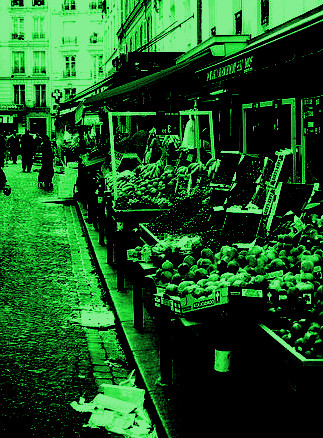Wet market evidence reviewed
 New evidence points to infected animals as the source of COVID-19.
New evidence points to infected animals as the source of COVID-19.
Researchers have come up with a shortlist of animal suspects as sources of the COVID-19 pandemic.
They say the outbreak likely began when infected animals were introduced to the Huanan Seafood Market in late 2019.
While previous investigations speculated that animals sold at the market played a key role, the new study published in Cell takes a more detailed approach, analysing over 800 environmental samples collected after the market's closure on 1 January 2020.
“This is one of the most important datasets that exists on the origin of the COVID-19 pandemic,” said Florence Débarre, co-corresponding author from the French National Centre for Scientific Research.
The data, originally collected by the Chinese Center for Disease Control and Prevention (CDC), were subjected to new analytical techniques that allowed researchers to identify animal species potentially linked to the viral spread.
The findings offer new evidence that species such as raccoon dogs and civet cats, which were present in the market, could have acted as intermediate hosts of the virus before it spilled over into humans.
“This paper adds another layer to the accumulating evidence,” said Kristian Andersen of Scripps Research, pointing out that all signs still point to a scenario involving infected animals triggering the pandemic in November 2019.
The study builds on previous work published by Chinese CDC researchers, who collected samples from surfaces at the market, such as walls, floors, and animal cages, after wildlife had been removed from the area.
Through metatranscriptomic sequencing, scientists detected traces of animal and viral genetic material co-occurring in samples from certain wildlife stalls.
Although there is no direct evidence that the animals were infected at the time, genetic material from raccoon dogs and civets was found alongside traces of SARS-CoV-2, reinforcing their potential role as carriers.
“We are seeing the DNA and RNA ghosts of these animals,” Débarre noted, underscoring the difficulty in proving infection without the animals themselves.
Co-author Michael Worobey from the University of Arizona said; “This is the most risky thing we can do - take wild animals teeming with viruses and bring them into contact with dense human populations”.
Researchers also conducted evolutionary analysis of early viral genomes linked to the market and determined that there were likely very few human cases prior to the market outbreak.
This supports the theory that the virus's jump from animals to humans occurred within the market, with limited transmission beforehand.
While this new study cannot definitively prove which species transmitted the virus, it narrows the focus to animals known for their susceptibility to coronaviruses.
Raccoon dogs, for instance, were identified as the most genetically abundant species in the samples.
These animals were implicated in the earlier SARS outbreak in 2003, as were civets, whose genetic material was also found in SARS-CoV-2-positive samples.
In response to ongoing conspiracy theories about the virus’s origins, the researchers emphasised the importance of uncovering the truth for public health.
“The reason it’s so important to find out is that this affects national security and public health, not just in the United States but around the world,” Worobey said.
As the global community continues to grapple with the aftermath of the pandemic, this research adds weight to the zoonotic theory of COVID-19’s origins while underscoring the need for vigilance against future spillover events.








 Print
Print